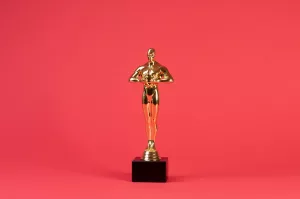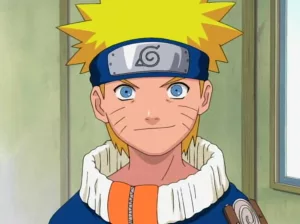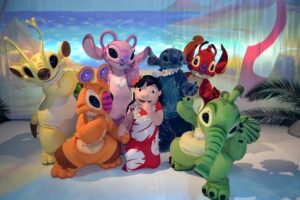Is Animation Getting Worse?

“To longer and worse life, a shorter and better, by all means, is to be preferred”
-Epictetus
We’ve heard of scenarios where they said AI will take over tasks that humans perform, one day. Well that “one day” is here now. AI is replacing the jobs humans had. It could be digital arts, writing scripts, photoshopping or animation for instance.
Today with the help of AI, time-consuming tasks can be programmed and automated. This helps the animators to focus on tasks that require their attention. With technological advances, the production of animation is becoming cheaper and quicker. It means that it’s available to more people now, which also means more content. We’ll further explore what this does to the quality of the same.
Defining Animation Quality
When the value of something decreases, the chances of getting its prototypes or copies increase.
“God there was so much CGI!”
“They could’ve toned some animation down, don’t you think?”
“VFX seemed sloppy.”
So we’ve heard statements like these at some point in our life, right? How exactly do we know if something’s good or bad? What are the parameters set to measure the quality? We cannot meet the criteria if we don’t know what they are in the first place.
A lot of people would describe the quality based on the movements of the objects, others would look for the colour palette, and some would want more 3D movements to make it look more realistic.
For example, we can’t judge the style of two different anime productions because their approach differs. Mostly for people, good animation refers to smooth movements. But it’s not just restricted to that. The twelve defined principles of animation are:
- Squash and stretch
- Anticipation
- Staging
- Straight-ahead action and pose-to-pose
- Follow-through and overlapping action
- Slow in and slow out
- Arc
- Secondary action
- Timing
- Exaggeration
- Solid drawing
- Appeal
Apart from setting the parameters, we should know what we’re working for. So, we can work towards achieving what we have in mind. Other than that, when we are working for or with someone, it’s crucial to make sure the content is according to their liking.
Perception of Animation Decline
There have been tremendous changes in this field. The audience has a variety of options when it comes to media consumption. Now you might think what this has to do with the decline in the perception of animation. Again, this might differ depending on who we’re asking. Those who prefer traditional animation might have a different opinion than those who prefer 2D and 3D animation, a modern version of the same.
Over the years, with the development of graphics, motions, storylines, etc. the diversity is considerably visible. So one cannot deny that there isn’t a decline in the perception of animation. There could be a few specific reasons for that.
We have been at instances where there was an upgrade we didn’t ask for. This also happens to be the case with animation here. Some people prefer their classics over the modern age. Prejudiced opinion leads to a decline in perception.
With the over-computerised generation of animation lately, some believe that animation has lost its essence of storytelling, character depth, originality, etc. that previously came from traditional animation because of technological advancements. With a vast amount of content available, a spectrum of quality available; increases. More people create and distribute content. Not all works would meet the expectations; this would lead to a decline in the perception.
At times, perhaps decline has nothing to do with perception. Audiences may prefer to consume a kind of genre that would lead to a decline in others.
Counter Arguments: Animation Improvements and Success.
Did you know that the movie, The Jungle Book, was filmed on a green screen with only the boy playing Mowgli’s character as the only real actor? Everything else you saw was animation and CGI. Yes, not even Bagheera was real.
So yes, animation has seen its fair share of achieving milestones, improvements and successes with all the artists putting in their hard work and the modern age’s advancements.
Animation saw the rise of the industry after movies like Avatar came out. Streaming platforms paved the way that gave these series that dealt with mature themes more exposure and an audience of almost all ages.
Apart from that, we saw the full length of CGI for the first time in Toy Story (1995). After that, movies used animation and CGI to the point that it blurred till one couldn’t tell what was real and what wasn’t.
A significant change in the storytelling and narratives was noted. Shows and producers took up more complex and mature themes. Animation isn’t only restricted to kids. Now there’s enough content available that anyone from any age group can find a series to their liking.
Nowadays, animation is also used for architecture and engineering. To generate the vision, models of projects, understand the depth, etc. Gaming is gaining momentum after the possibilities that animation has achieved. Education taking the form of an animated version made it easy to introduce concepts that would rather induce vasovagal syncope, also triggered at the sight of blood or emotional stress. For a second, they seem fun to watch rather than the monotonous voiceovers, don’t you think? Other than that, Augmented Reality and Virtual Reality (AR and VR) are branches of the same.
Audience Diversity and Expanded.
Artists are now breaking the norms and standards and coming up with new material, advances, and ideas every day; paving the way for animation to take over eventually.
Over the years, animation has only resulted in a wider audience with great storytelling and increased appeal. Because of this, there is diversity in the media, which enhances creativity. The higher the diversity, the more the audience engages. Now we know that the anime that most of the GenZ watches are in Japanese. This doesn’t stop those who don’t know Japanese from watching it. People from all over the world indulge in media that isn’t restricted to a culture or a language. It brings a broader range of engagement through differences in perspectives, cultural backgrounds, etc. The different cultures one indulges in ignite a spark in the minds of the enthusiasts. For example, that one person we know who tries to learn a new language because the media they consume is in that language.
The reasons we explored above were for entertainment purposes. But now animation has become a tool anyone can manipulate to leverage their interests. For example, advertising and marketing. Using animation in commercials, ad films to pass out short but effective messages, etc. They could use actors to shoot short films but animation grabs people’s attention, not to mention, even the kids’.
Achieving audience diversity and expansion is still an ongoing process but the makers are trying to achieve it by inclusion of various cultures, availability through various mediums, increasing appeal, exploring various backgrounds, etc.
Animation Mediums
Animation Mediums refer to the form in which the art takes place and through which the story is conveyed. Technically animation has made immense profess however there are only three primary types of animation that remain:
- Traditional Animation
- Stop Motion Animation
- Computer Animation
Doing anything requires a lot of time and dedication, as is the case with making animated movies. Scripts get readied, voice actors are brought in, production houses are contacted, character designs are chalked out, etc. After that, deciding which medium would prove to be most effective is also a choice to make. So what are these mediums?
The word traditional itself speaks for itself. The artworks in the early times depict the traditional medium of animation. Snow White and the Seven Dwarfs (1937) and Pinocchio (1940) could be examples of the same.
Your TikTok transition videos could be a kind of stop-motion video. It focuses on manipulating the objects in one’s frame and shooting it in a way in which they appear to be moving. It works like our flipbooks except almost 24 frames are stacked together per second to get that outcome. Shaun the Sheep is one the examples of stop motion animation.
While Computer Generated Imagery (CGI) focuses on creating animation digitally from scratch, computer animation deals with moving objects. It’s almost as if computer animation can give life to non-living aspects of life. Mickey Mouse, the first cartoon with sound, developed by Walt Disney in 1928 was computer animation. Our favorite Disney, and Pixar movies Despicable Me, Frozen, and Ice Age are all our typical computer animation movies.
Conclusion
Whether or not the animation is getting worse is a subjective opinion. They are instances when upgrades aren’t welcomed, like the time when Instagram swapped the place of two icons. But one cannot deny that there isn’t any progress made. Progress is slow and gradual and the field of animation seems to be steady.
There was a time people thought airplanes wouldn’t work and here we are. There are various forms that it will take and achieve what we think is impossible right now. Of course, there tend to be limitations but looking at the development that has taken place in the past decades, we’ll find loopholes for that too.
Animation has made a huge impact, be it in the commercial sector or the entertainment industry, educational purposes or gaming apps. There are some concepts that one couldn’t understand without illustrating them with googly eyes and unconventional shapes, colors and bizarre storylines. I mean we all remember, Inside Out don’t we?
So far, taking a peek through the window of the vast field of animation, we’ve seen that animation is still evolving now. One article cannot do justice to it. One can always try.








